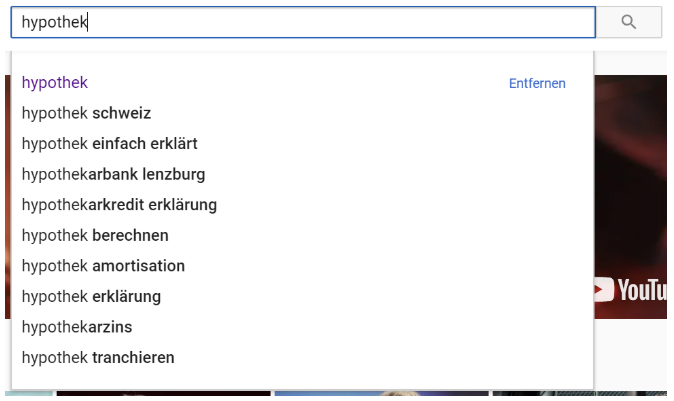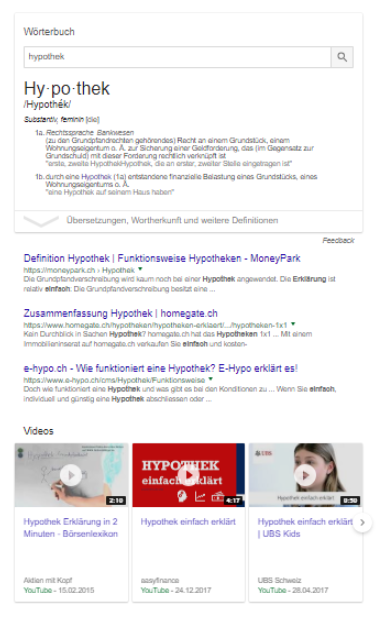How does Video SEO work? - Our answers
You can find out how to make your videos fit for search engine optimization here
When marketers think of the term "SEO" they usually think of website rankings on Google. But there are alternatives - even in highly competitive markets. Our SEO tip: optimize your videos. On YouTube, the second largest search engine worldwide, it is often easier to achieve a good ranking position.
The traffic from search engines is popular: it is of high quality and often has the highest ROI. The reason for this is that it is a pull channel and users are actively looking for information. It is therefore not surprising that many companies concentrate their SEO measures on this.
Google or YouTube?
Due to the Google-focused activities of countless companies, a top ranking on this search engine is often associated with a high use of resources. Either extensive investments in SEO or a high media budget for Google Adwords are necessary. The high ROI is therefore no longer given in some industries. So what are the alternatives?
A glance at the most popular search engines shows that the second largest is also from Alphabet: YouTube. Depending on the calculation, it has between three and five percent of all market shares. This may seem modest at first glance, but this corresponds to around 200 billion search queries worldwide every year. So SEO for the video makes sense.
The search behaviour differs depending on the target group. Generation Z, for example, frequently searches for product reviews on Youtube, as a Merkle study shows. Videos can also help to explain or emotionalize products. But what is the best way to optimize a video for YouTube? First of all: Similar principles apply as for the optimization for other search engines. First and foremost, the intention of the user should be satisfied.
Video SEO - How to do it in a few steps
Research - Find out what users are actually interested in
Just like Google, YouTube allows you to find out which keyword combinations are searched for most often via autosuggest. These often betray the intention of the user.

There are also specialized tools (e.g. Keyword Tool) that display the YouTube search volume of keywords. Even with YouTube optimization, it is worth taking a look at the Google Keyword Planner, because depending on the keyword, YouTube videos rank in the organic results of Google. It is also advisable to start with long tail keywords. Because here a ranking is easier than with a highly competitive search term.

Concept and implementation - Align the content of videos with keywords
During the conception it is important to align the content with the keyword. Thus the video satisfies the user's search intention. A storyboard helps with this. A template is created which content must be included. Only then does the creative implementation begin.
Special attention should be paid to the beginning. The normal user decides in the first fewseconds whether or not to continue watching a video. A short overview of the contents helps here, so that the user can judge whether his need for information is satisfied by the video.
About the format: It often helps to use existing and successful YouTube video formats, such as Listicles or explanatory videos ("In 5 steps to the mortgage", "Mortgage explained simply"). Depending on the industry and target group, a different style can be defined. The video can be animated or a person from the company can appear as a testimonial. Here it is important to be as authentic as possible. The sound quality is always particularly important. No matter how small the production budget, a good microphone is indispensable.
There is no general recommendation on the length of a video. For example, explaining a mortgage may take four minutes, while a lifehack can be explained in one minute. Videos tend to be too long, often less is more.
A special feature of YouTube videos is the ending. This is the ideal time to get in touch with the user. So you can for example...
- referred to links in the description
- ask the community to submit open questions
- invite users to subscribe to the channel.
Video SEO – make your video successful with the right care of thumbnail and description
Even when the video is created, the work is not over yet. The clean maintenance of the video information is essential. It is essential that the keyword appears in the title. You should also define a suitable category.
The thumbnail and the video description are also decisive for the viewer numbers. The thumbnail should provide information about what is shown in the video. So the user can be sure that he gets what he is looking for. The description should begin by describing in a few words what is to be seen in the video. After that, further information and links to the desired landing page can be integrated.
To increase the visibility of the video, it should be distributed on company-owned channels and other social media. It is also recommended to maintain your own YouTube channel and create playlists. This way you can demonstrate your expertise in your field of expertise.
My video SEO bonus tip at the end
Link your YouTube channel and your AdWords account together. This way you can use retargeting and accompany the users on their customer journeys. This audience has a basic interest in your product, which increases the probability of a purchase.
In the end - as always with SEO - the following applies: plan, test, measure and optimize. Have you already gained experience in video SEO? Please let us know by comment. The same applies to questions.










